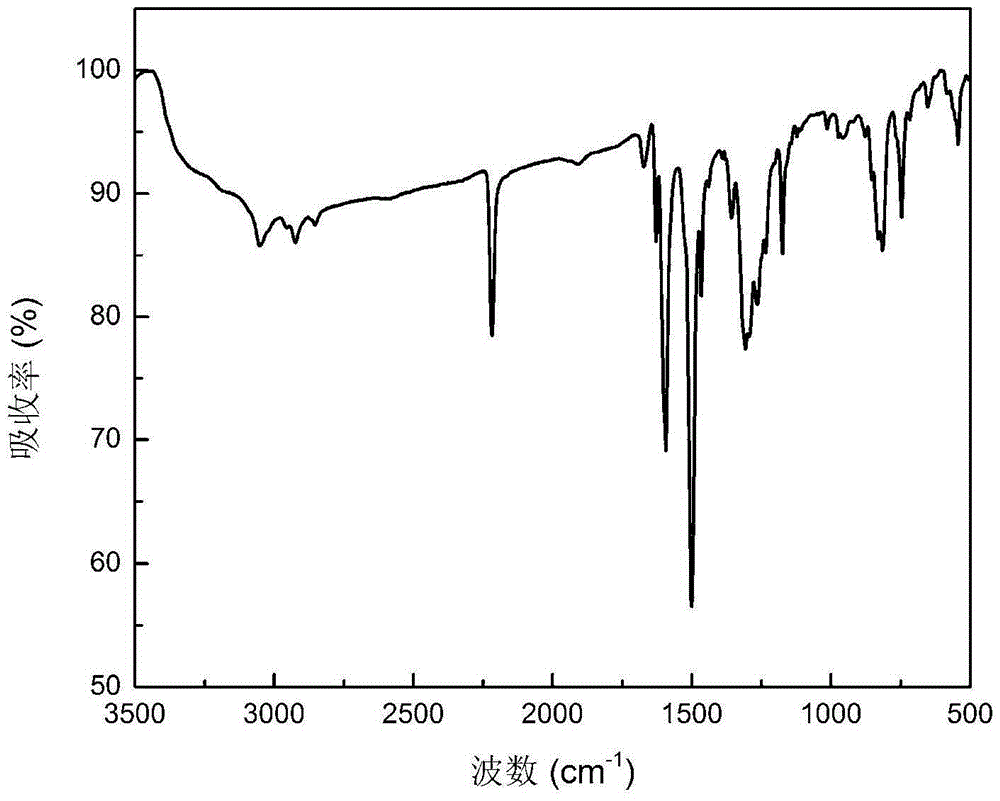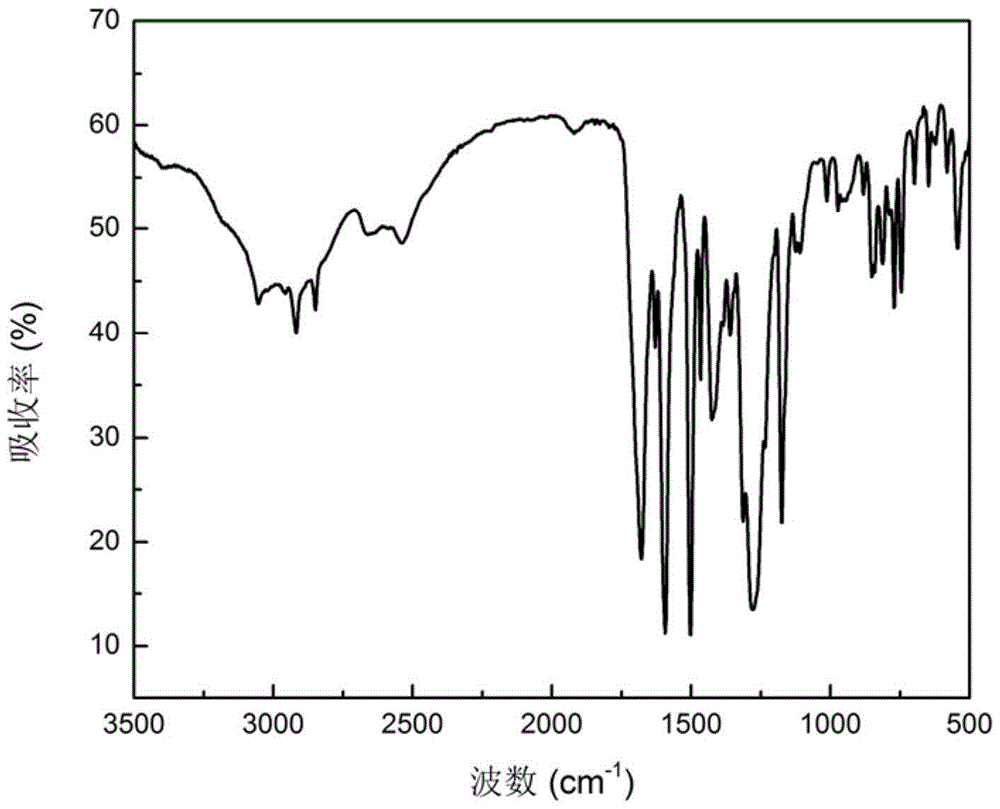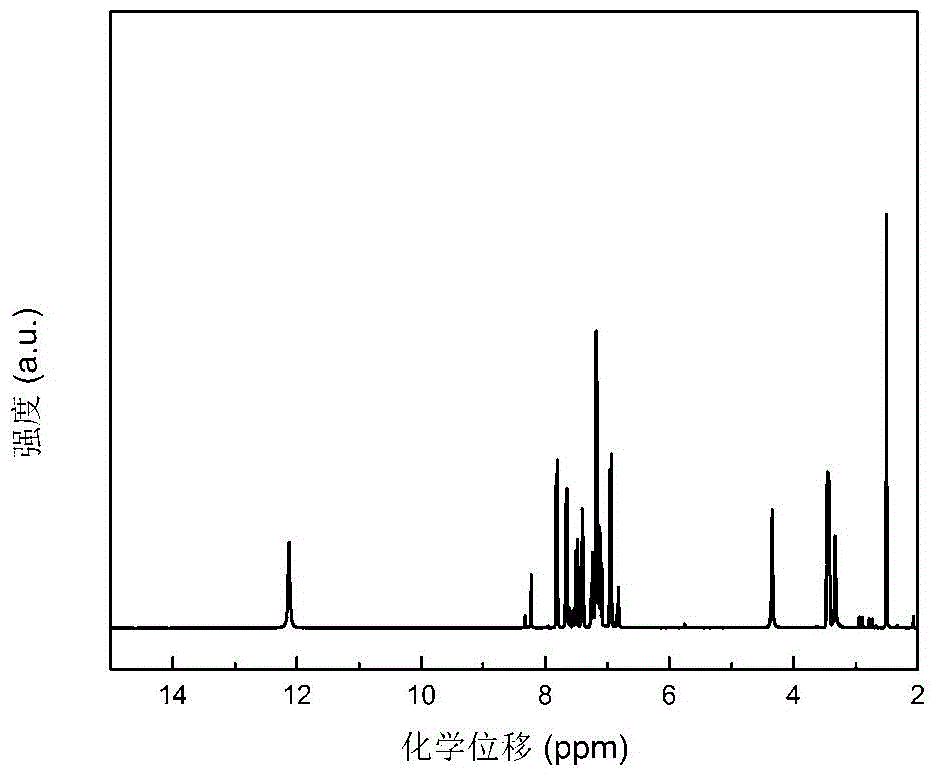Triphenylamino group-containing polyamide film, and production method and application thereof
A polyamide film and triphenylamine-based technology, applied in the field of polyamide film and its preparation, can solve the problems of low solubility of polyamide, difficult to process into film, low response sensitivity, etc., and achieve the effects of high solubility and good reversibility
- Summary
- Abstract
- Description
- Claims
- Application Information
AI Technical Summary
Problems solved by technology
Method used
Image
Examples
specific Embodiment approach 1
[0047] Specific embodiment one: this embodiment is a kind of structural formula of the polyamide film that contains triphenylamine group is:
[0048] where the R 1 for The R 2 for said n 1 The value of 1≤n 1 ≤100, and n 1 is an integer; the n 2 The value of 1≤n 2 ≤100, and n 2 is an integer.
specific Embodiment approach 2
[0049] Specific embodiment two: present embodiment is a kind of preparation method that contains the polyamide film of triphenylamine group and is finished according to the following steps:
[0050] 1. Polymerization reaction:
[0051] N,N'-bis(α-naphthyl)-N,N'-bis(4-phenylamine)biphenylenediamine monomer or N,N'-diphenyl-N,N'-bis(4- Aniline) biphenyldiamine monomer, diacid monomer and calcium chloride are added to an organic solvent, and then reacted at a temperature of 120°C to 150°C for 5h to 7h, then use methanol to precipitate the reactant I, and then perform suction filtration , discarding the filtrate to obtain the reactant I; then using the Soxhlet extraction method to purify the reactant I, and then drying the purified reactant I at a temperature of 30-40°C for 3h-5h to obtain triphenylamine-containing Polyamide;
[0052] The molar ratio of N,N'-bis(α-naphthyl)-N,N'-bis(4-phenylamine)biphenylenediamine monomer and diacid monomer in step 1 is 1:1 or N , the molar ra...
specific Embodiment approach 3
[0067] Specific embodiment three: the difference between this embodiment and specific embodiment two is: N,N'-bis(α-naphthyl)-N,N'-bis(4-aniline)biphenyl described in step one Diamine monomers are prepared as follows:
[0068] ①. Dissolve N,N-di(α-naphthyl)-4,4-biphenyldiamine in dimethyl sulfoxide under a nitrogen atmosphere, then add p-fluoronitrobenzene and sodium hydride, and then React at ℃ for 24h-30h to obtain a reaction solution; add the reaction solution to cold water, then perform suction filtration, discard the filtrate, and obtain a yellow precipitate; use acetonitrile to wash the yellow precipitate for 2 to 4 times, and then in the temperature Dry at 30°C-40°C for 8-15 hours to obtain reaction product A;
[0069] The substance ratio of N,N-bis(α-naphthyl)-4,4-biphenylenediamine and p-fluoronitrobenzene described in step ① is 1:2;
[0070] The volume ratio of the amount of N,N-di(α-naphthyl)-4,4-biphenylenediamine described in step 1 to dimethyl sulfoxide is 1mol...
PUM
| Property | Measurement | Unit |
|---|---|---|
| Thickness | aaaaa | aaaaa |
| Thickness | aaaaa | aaaaa |
| The peak | aaaaa | aaaaa |
Abstract
Description
Claims
Application Information
 Login to View More
Login to View More - R&D Engineer
- R&D Manager
- IP Professional
- Industry Leading Data Capabilities
- Powerful AI technology
- Patent DNA Extraction
Browse by: Latest US Patents, China's latest patents, Technical Efficacy Thesaurus, Application Domain, Technology Topic, Popular Technical Reports.
© 2024 PatSnap. All rights reserved.Legal|Privacy policy|Modern Slavery Act Transparency Statement|Sitemap|About US| Contact US: help@patsnap.com










